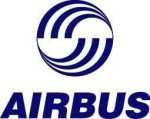Tue, Nov 17, 2009
Air New Zealand Will Purchase First Aircraft With New
Winglets
 Airbus has launched its new "Sharklet" large wingtip devices,
which it says are designed to enhance the eco-efficiency and
payload-range performance of the A320 Family. Sharklets, which are
offered as a forward-fit option, are expected to result in at least
3.5 percent reduced fuel burn over longer routes, accounting for an
annual CO2 reduction of around 700 tons per aircraft. Airbus said
Sunday that the A320 will be the first model fitted with Sharklets,
which will be delivered around the end of 2012, to be followed by
the other A320 Family models from 2013. Air New Zealand is the
launch customer for the Sharklets which are specified for its
future A320 fleet.
Airbus has launched its new "Sharklet" large wingtip devices,
which it says are designed to enhance the eco-efficiency and
payload-range performance of the A320 Family. Sharklets, which are
offered as a forward-fit option, are expected to result in at least
3.5 percent reduced fuel burn over longer routes, accounting for an
annual CO2 reduction of around 700 tons per aircraft. Airbus said
Sunday that the A320 will be the first model fitted with Sharklets,
which will be delivered around the end of 2012, to be followed by
the other A320 Family models from 2013. Air New Zealand is the
launch customer for the Sharklets which are specified for its
future A320 fleet.
"Air New Zealand recently decided to move to an all A320 fleet
for narrow-body operations on domestic and short-haul international
routes," said Air New Zealand Chief Executive Officer, Rob Fyfe.
"The new Sharklets will enable our Airbus fleet to benefit from
lower fuel burn and carbon emissions, both across Air New Zealand's
domestic network and especially on the longer trans-Tasman
sectors."
Airbus Chief Operating Officer - Customers, John Leahy said
"Sharklets are not just part of Airbus' response to addressing
environmental issues and rising fuel costs, but they also enhance
aircraft overall performance."
 Airbus claims that the 3.5 percent efficiency improvement with
Sharklets will be in addition to the already positive effect of the
A320 classic wingtip fence. Payload-range benefits include either a
revenue payload increase of around 1,100 lbs or an additional 100nm
range at the original payload. The Sharklet installation also keeps
the A320 Family within the ICAO 'Class C' (wingspan less than 118
feet) and will result in higher available takeoff weights, notably
from obstacle-limited runways. Moreover, where runway performance
is not 'limiting', operators should profit from a reduction in
average takeoff thrust (with consequent savings in engine
maintenance costs by around two percent), while communities will
also appreciate even lower takeoff noise. Other benefits are the
enhanced climb performance and higher initial cruise altitude.
Airbus claims that the 3.5 percent efficiency improvement with
Sharklets will be in addition to the already positive effect of the
A320 classic wingtip fence. Payload-range benefits include either a
revenue payload increase of around 1,100 lbs or an additional 100nm
range at the original payload. The Sharklet installation also keeps
the A320 Family within the ICAO 'Class C' (wingspan less than 118
feet) and will result in higher available takeoff weights, notably
from obstacle-limited runways. Moreover, where runway performance
is not 'limiting', operators should profit from a reduction in
average takeoff thrust (with consequent savings in engine
maintenance costs by around two percent), while communities will
also appreciate even lower takeoff noise. Other benefits are the
enhanced climb performance and higher initial cruise altitude.
This latest development has been part of the larger continuous
improvement program for the A320 Family which is supported by an
annual investment in excess of $150 million each year. To this end,
Airbus has conducted a thorough campaign over several years to
evaluate improved large aerodynamic devices - not only using
Airbus' company-owned A320 test aircraft, but also with its
advanced computational-fluid-dynamics (CFD) simulation-tools.
More News
Also: Outlaw Prop 4 Mooney, Ready 4 Duty, Ukrainian F-16 Pilot Lost, Blue Origin Flt On his journey to become the first pilot to land solo on all seven continents, 19-year-old Etha>[...]
Also: DarkAero Update, Electric Aircraft Symposium, Updated Instructor Guide, OSH Homebuilts Celebrate The long-awaited Sonex High Wing prototype has flown... the Sonex gang tells >[...]
Discrete Code As used in the Air Traffic Control Radar Beacon System (ATCRBS), any one of the 4096 selectable Mode 3/A aircraft transponder codes except those ending in zero zero; >[...]
From 2023 (YouTube Edition): Deviation from the Historical Mean Racine, Wisconsin-based DeltaHawk is a privately-held manufacturer of reciprocating engines for aircraft and hybrid >[...]
Aero Linx: Formation and Safety Team (F.A.S.T.), USA The Formation and Safety Team (FAST) is a worldwide, educational organization dedicated to teaching safe formation flying in Wa>[...]
 Airborne 07.02.25: TikToker Arrested, Vietnam A/L Ground Hit, ATC Modernization
Airborne 07.02.25: TikToker Arrested, Vietnam A/L Ground Hit, ATC Modernization Airborne Affordable Flyers 07.03.25: Sonex HW, BlackShape Gabriel, PRA Fly-In 25
Airborne Affordable Flyers 07.03.25: Sonex HW, BlackShape Gabriel, PRA Fly-In 25 ANN's Daily Aero-Term (07.07.25): Discrete Code
ANN's Daily Aero-Term (07.07.25): Discrete Code Classic Aero-TV: DeltaHawk Aero Engine Defies Convention
Classic Aero-TV: DeltaHawk Aero Engine Defies Convention ANN's Daily Aero-Linx (07.07.25)
ANN's Daily Aero-Linx (07.07.25)




